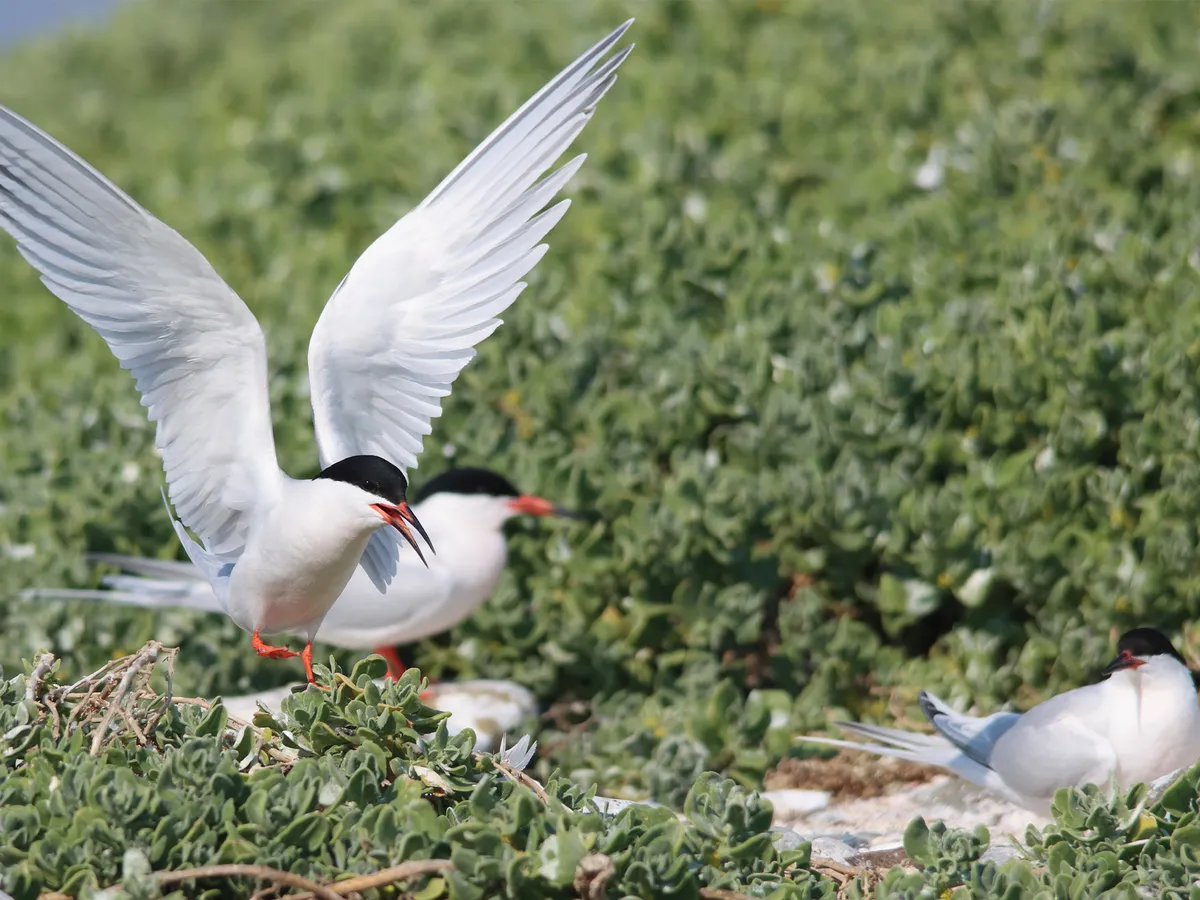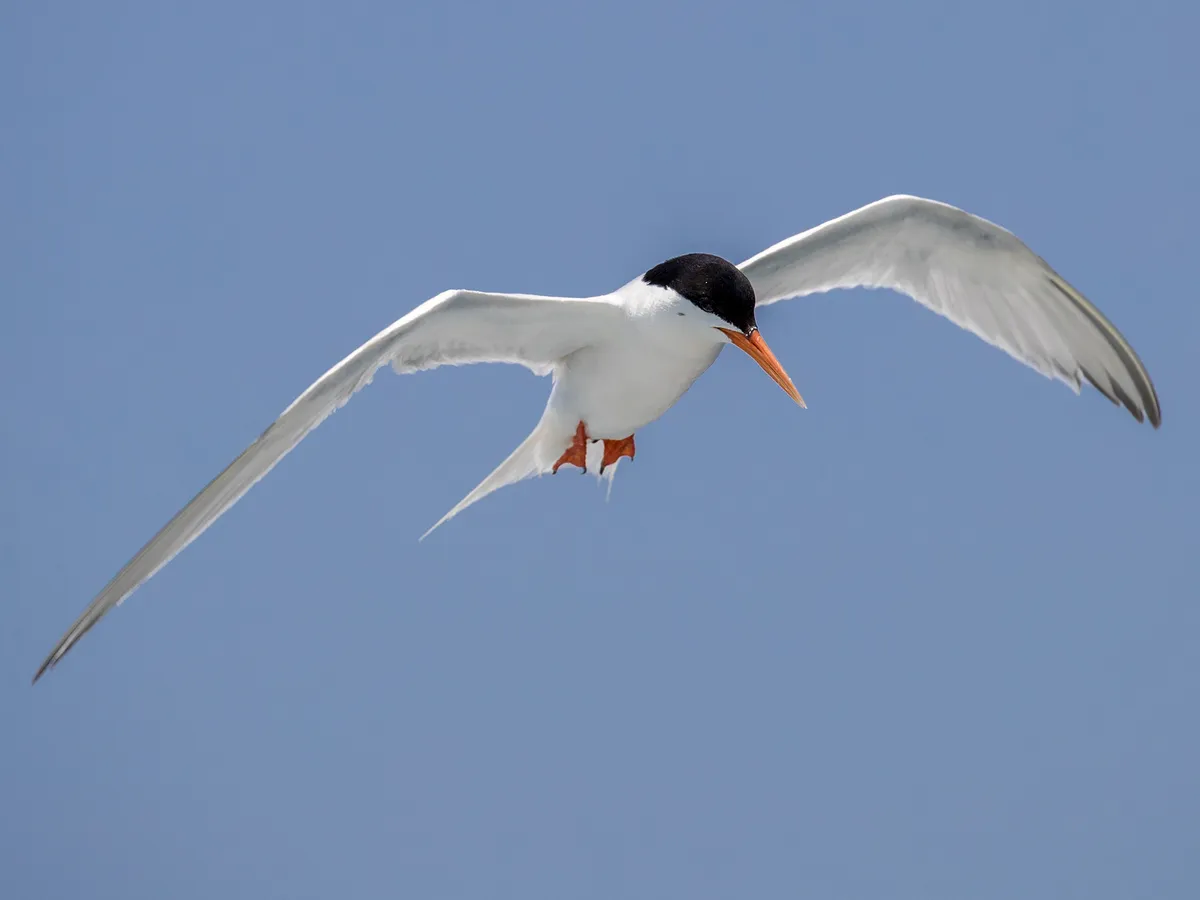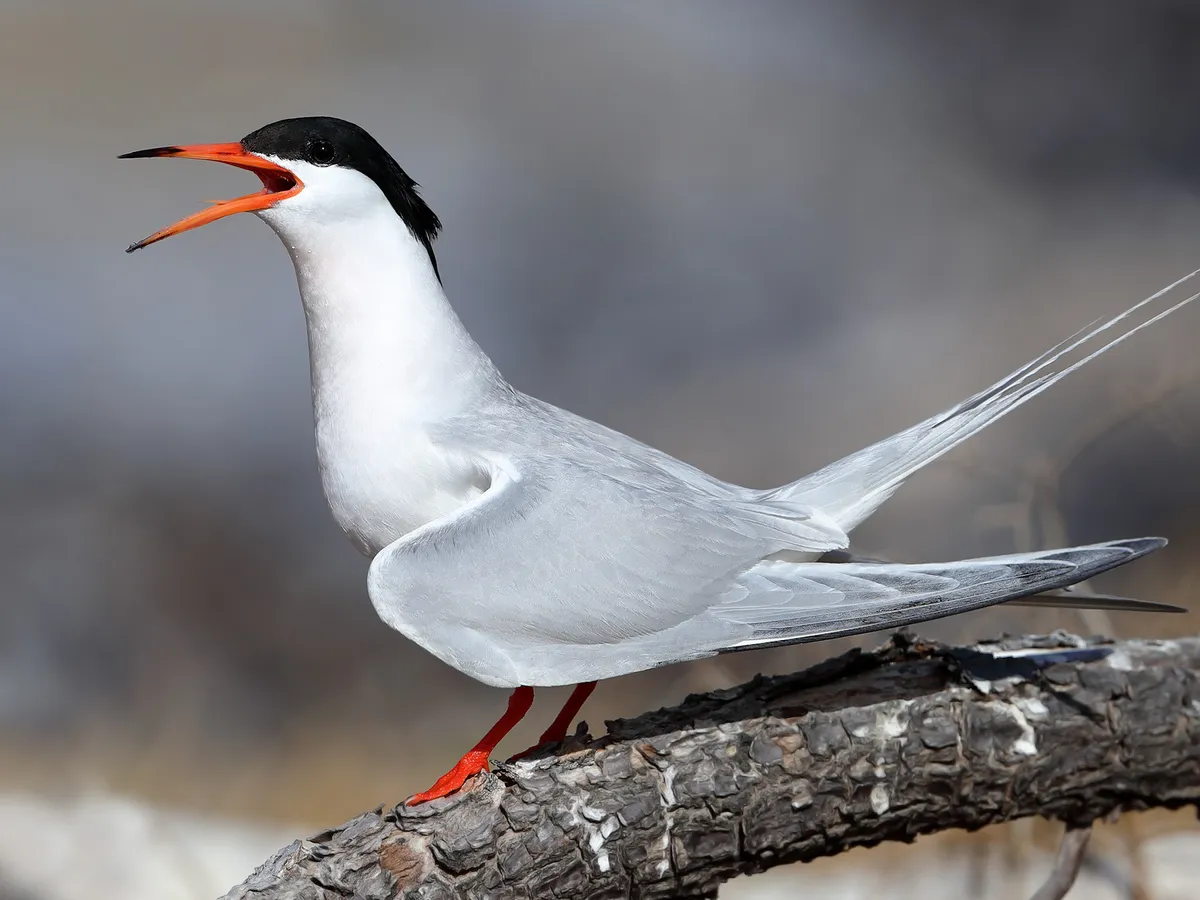
The roseate tern, a bird of captivating beauty, graces six continents across the globe with its presence. However, despite its wide distribution, this elegant avian species has faced significant declines in certain regions, raising concerns about its long-term survival.
Dressed in ethereal white plumage adorned with a striking black cap extending gracefully down its neck, adult roseate terns present a visual masterpiece. Pale grey wings, accented by dark-tipped outer primary feathers, create an enchanting contrast. A touch of rosy pink graces their creamy white breast, particularly during the early breeding season, while their unique forked tails proudly display long white plumes.
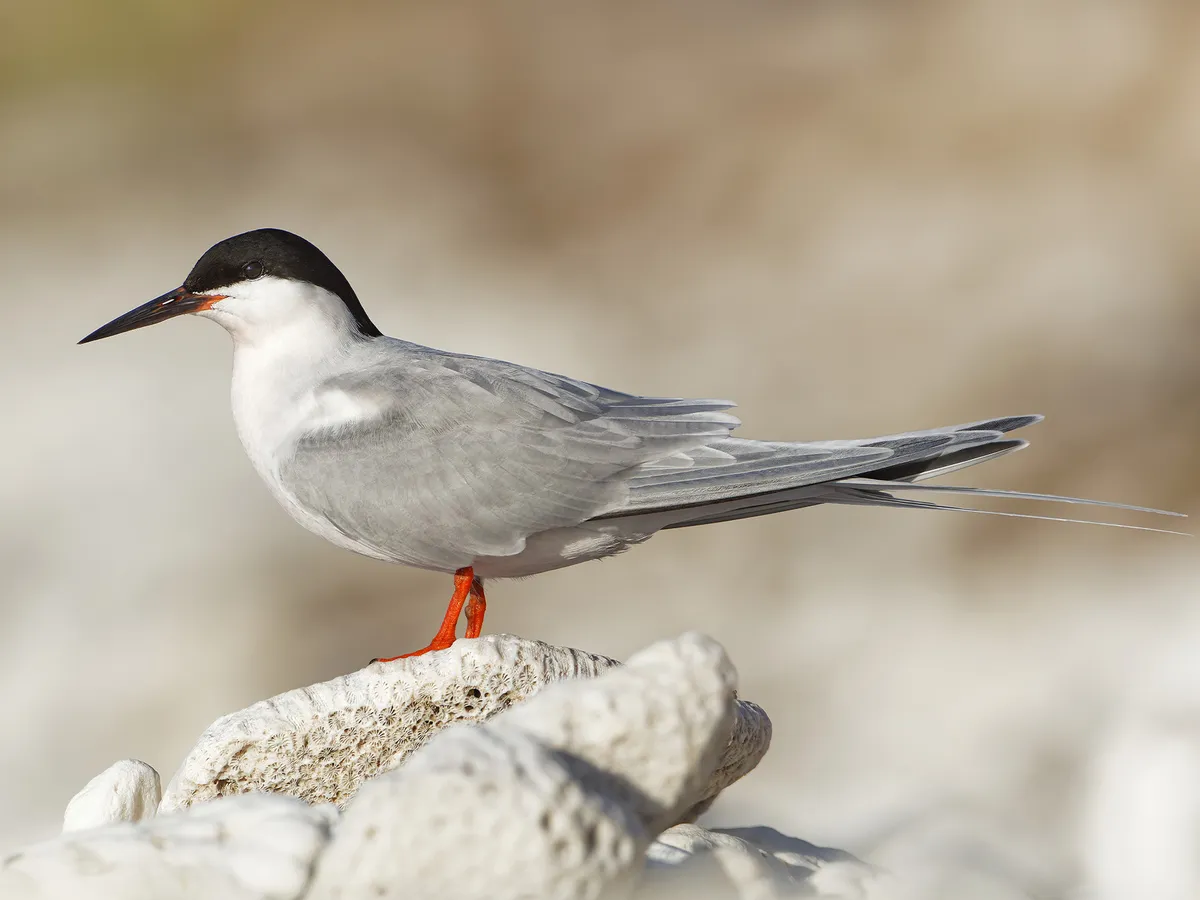
Juvenile roseate terns exhibit white underparts, beautifully contrasting with heavily mottled brown and white markings on their backs and wings. Dark bills and legs along with a grayish-black cap complete their youthful attire.
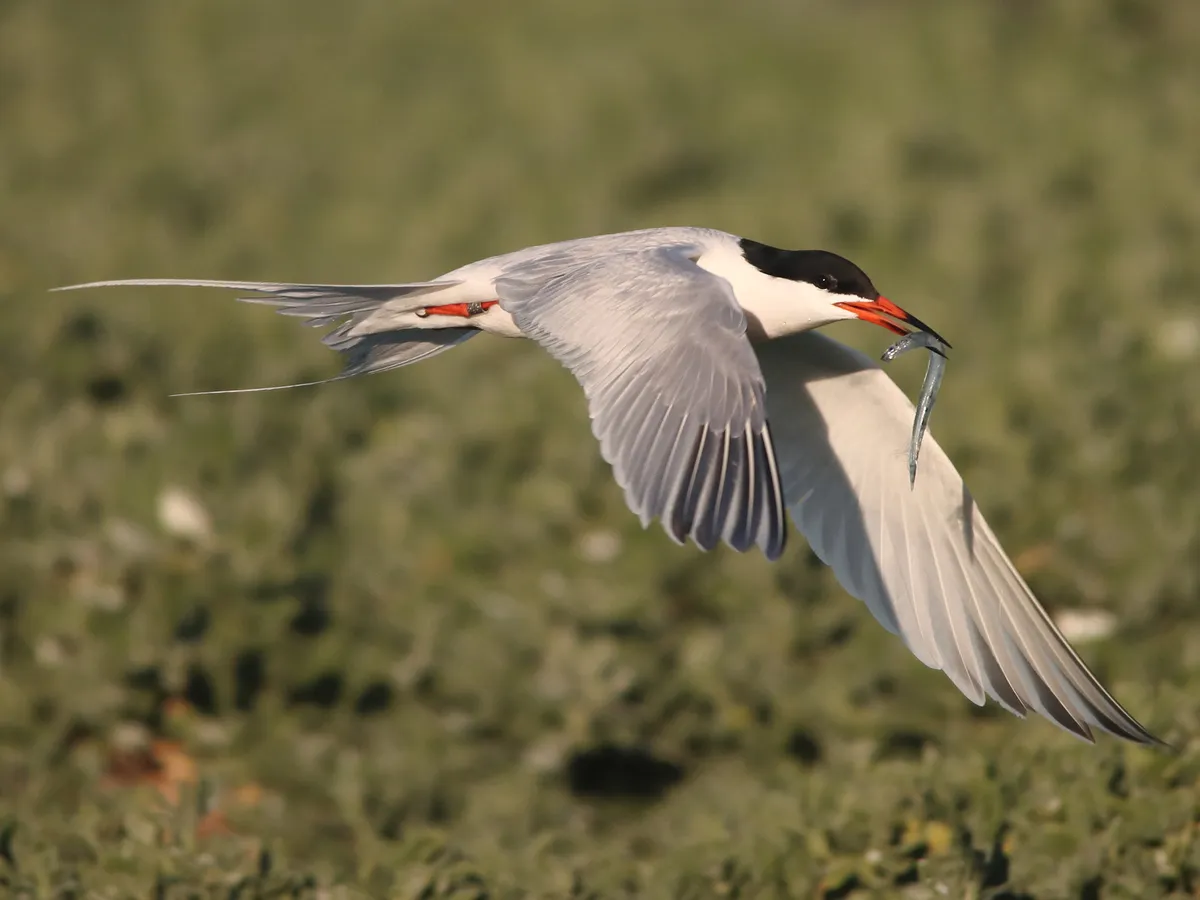
In terms of size, roseate terns fall between the Arctic tern and common tern, although they are smaller than the Sandwich tern. Both male and female roseate terns share similar proportions, except during the breeding season when females temporarily gain a slight weight advantage. Notably, their tail streamers can stretch up to an impressive 22 cm (8.7 in).
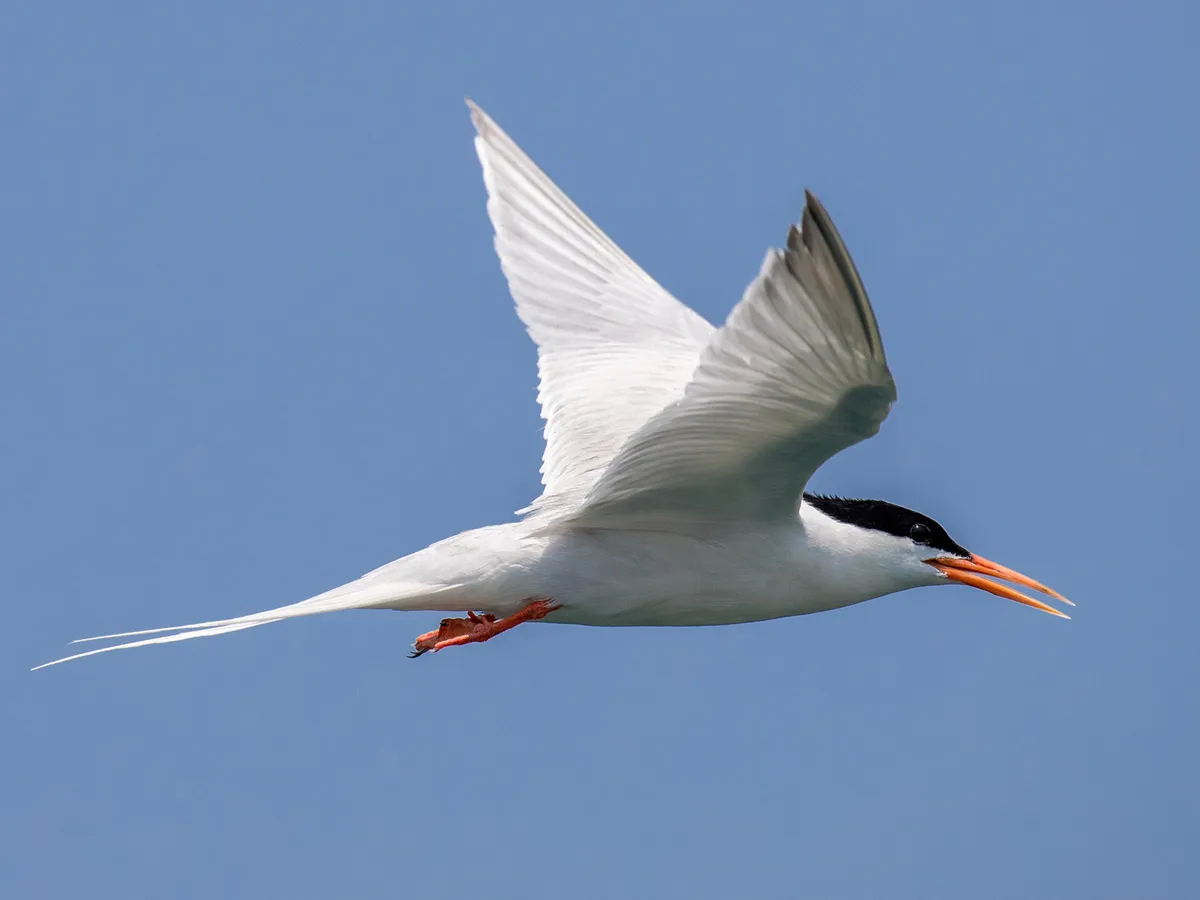
Among their distinctive features is their unique call – a two-note ‘tchi-vik’ and ‘chu-wit’ that resonates like the call of a spotted redshank.
These terns are adept fish catchers, diving skillfully into marine waters for their prey. While fish are their primary sustenance, they occasionally indulge in crustaceans, squid, and insects. Roseate terns have been known to engage in mobbing behavior, targeting other seabirds like puffins and brown pelicans to steal their catch.
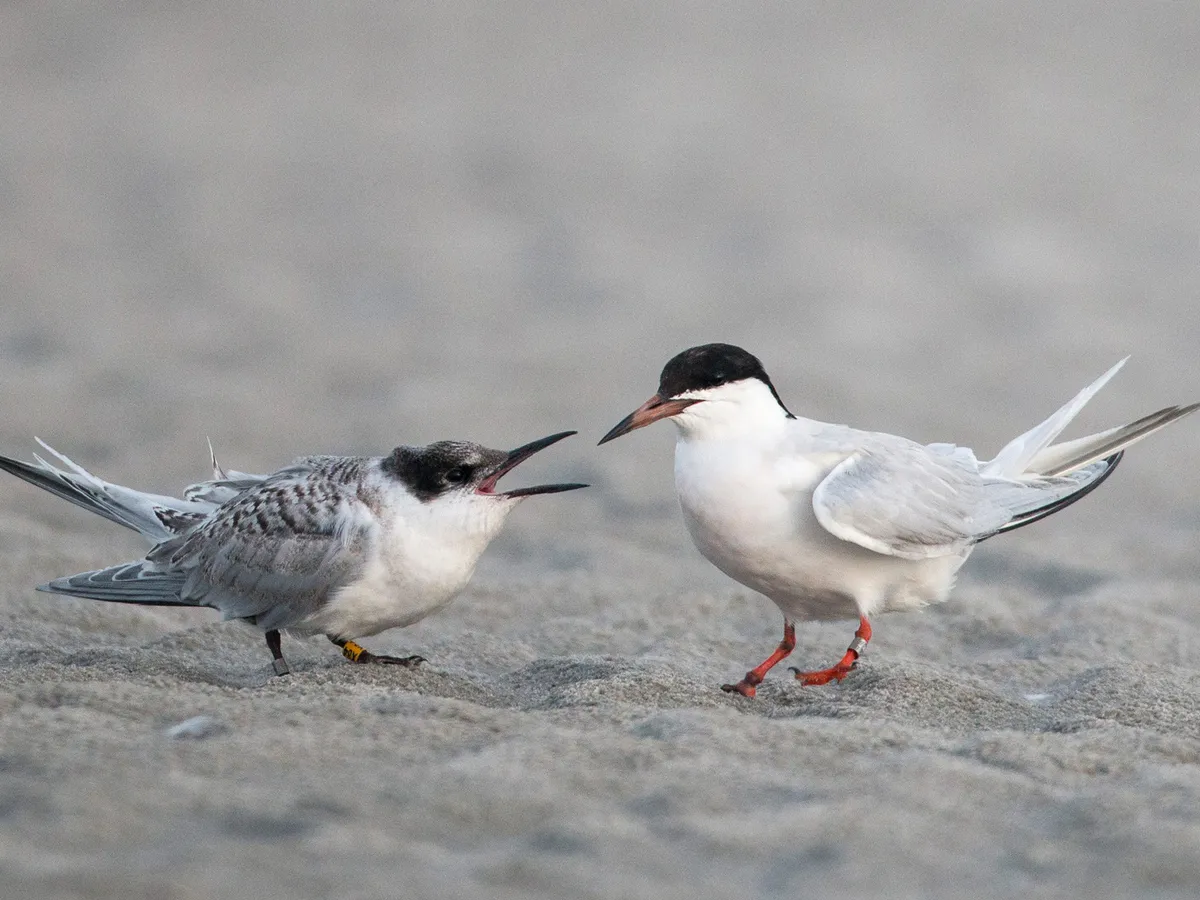
Nurturing their offspring, these terns initially feed regurgitated fish to their chicks, later introducing smaller fish species such as sand lance, anchovies, hake, and herring.
Roseate terns’ habitat is as diverse as their distribution. In North America, large colonies thrive in Great Gull Island, New York, as well as Ram Island and Bird Island in Massachusetts. The Caribbean hosts breeding on islands from the Florida Keys to Trinidad and Tobago, and even further south. In Europe, they grace the coasts of the British Isles, Ireland, France, and beyond, along with the Canaries and the Azores.
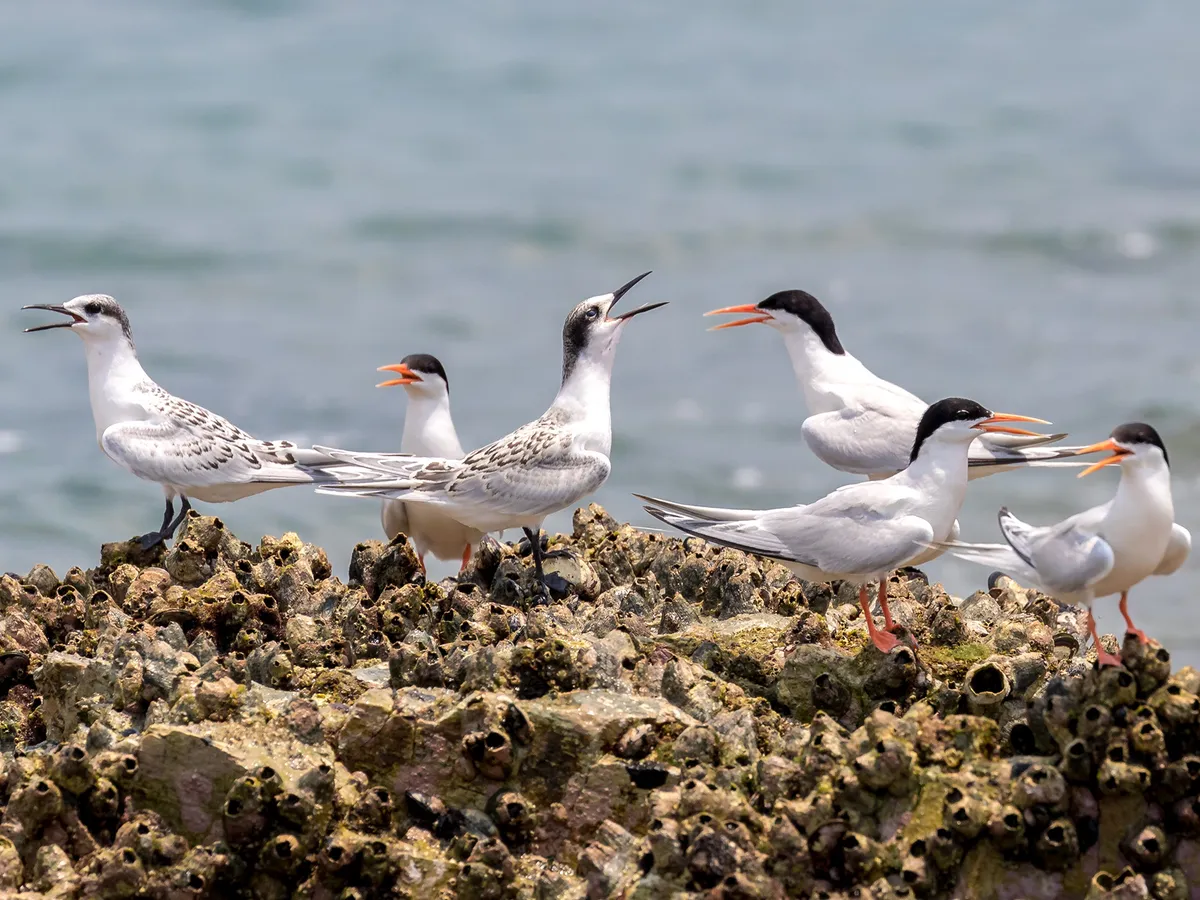
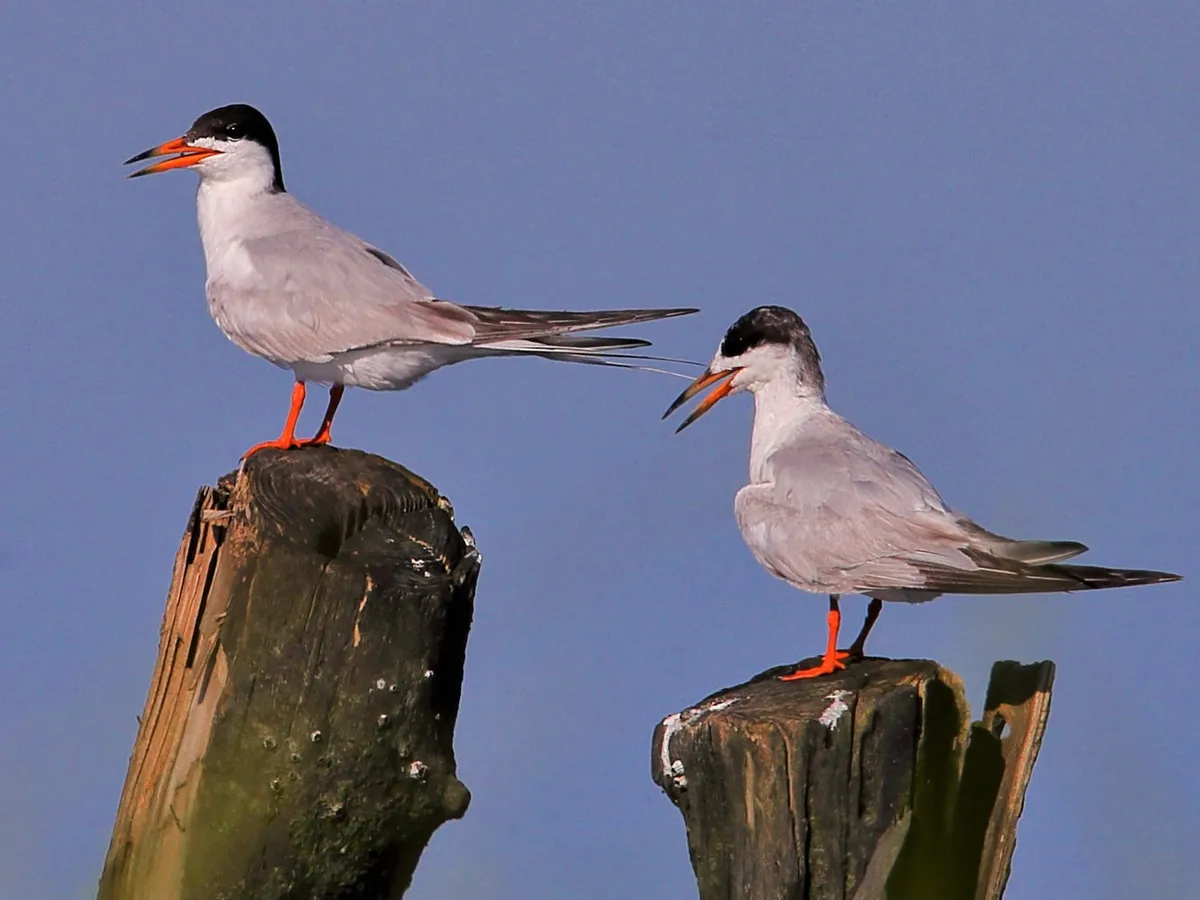
Observing roseate terns is a rarity outside of their concentrated colonies. Migration passages provide some opportunities, particularly along coastal regions. Breeding in the UK is limited and localized, making Northumberland, Anglesey, and the Firth of Forth prime spots. Even the nearest key breeding site, Rockabill Island in County Dublin, hosts a significant portion of Europe’s population.

